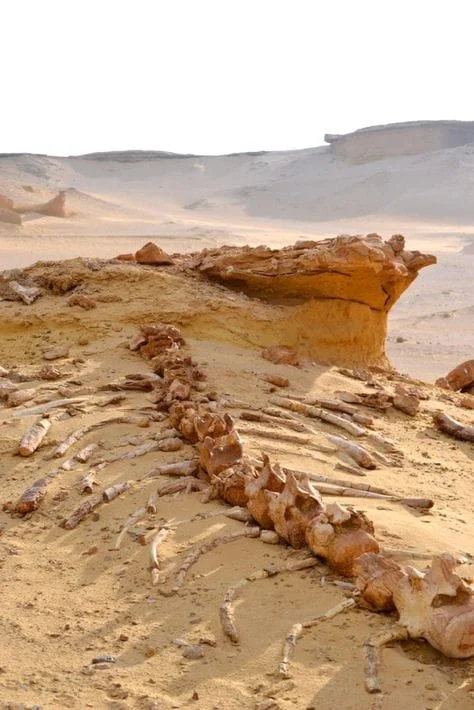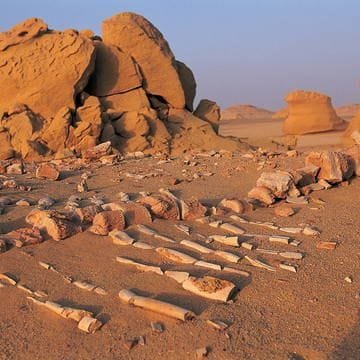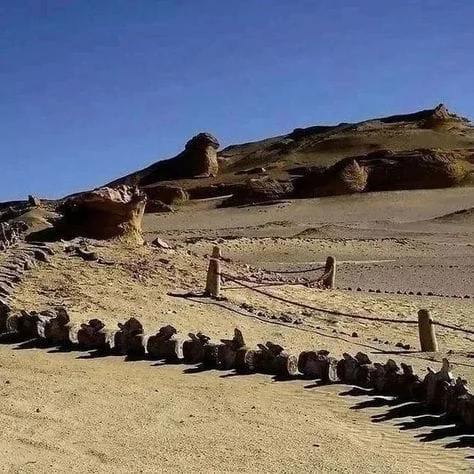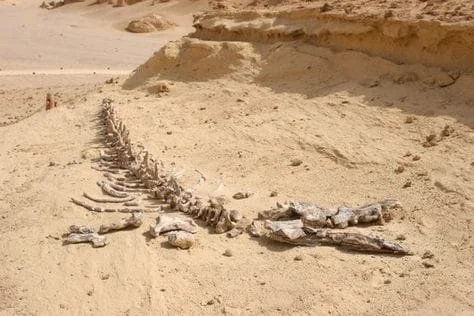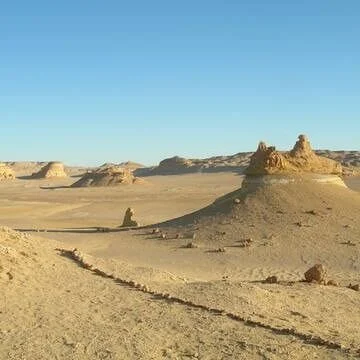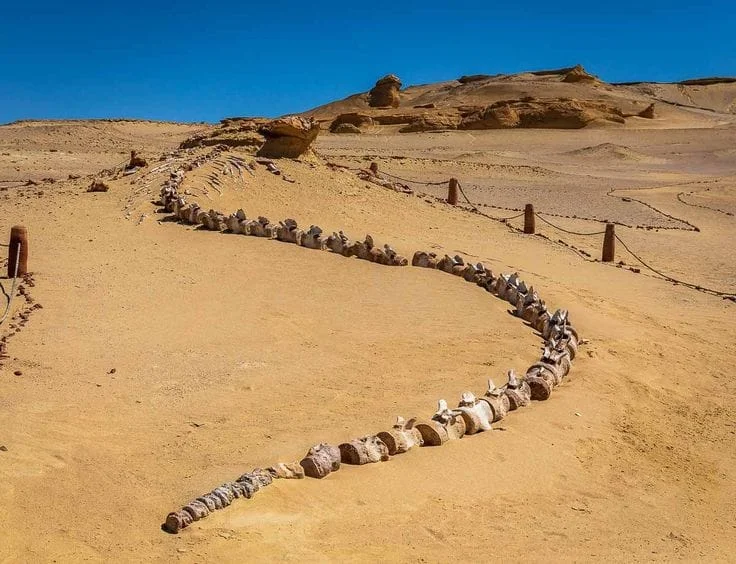The Fossilized Wonders
The real star of Wadi Al-Hitan is, without a doubt, its fossilized remains. The valley is essentially an open-air museum, with hundreds of fossils scattered across its desert floor, some nearly fully preserved. These fossils include not only early whales but also other marine creatures that once thrived in the ancient seas that covered the region. Among the most significant discoveries are the remains of Basilosaurus, an ancient whale that still had legs, providing clear evidence of the evolutionary shift from land animals to sea-dwellers. Some of the fossils found here are incredibly well-preserved, allowing paleontologists to gain deeper insights into the animals' biology and behavior. These creatures, which lived around 40 million years ago, were very different from modern whales. For example, the Dorudon, another prehistoric whale found in the valley, had a more slender body and retained features indicating it had not fully adapted to life in the water. The fossils also include the remains of other aquatic animals, such as sea cows and ancient fish, giving visitors a fuller picture of the ecosystem that existed here. This diverse array of fossils makes Wadi Al-Hitan one of the most significant paleontological sites in the world. Visitors can see fossilized whale bones, teeth, and vertebrae, along with footprints and other evidence of ancient life. The Valley of the Whales offers an incredible opportunity for anyone fascinated by ancient life to see these remarkable fossils in their original context, deep in the heart of Egypt’s Western Desert.


